Signature ceramics: Markus Karstieß’ performative porcelain
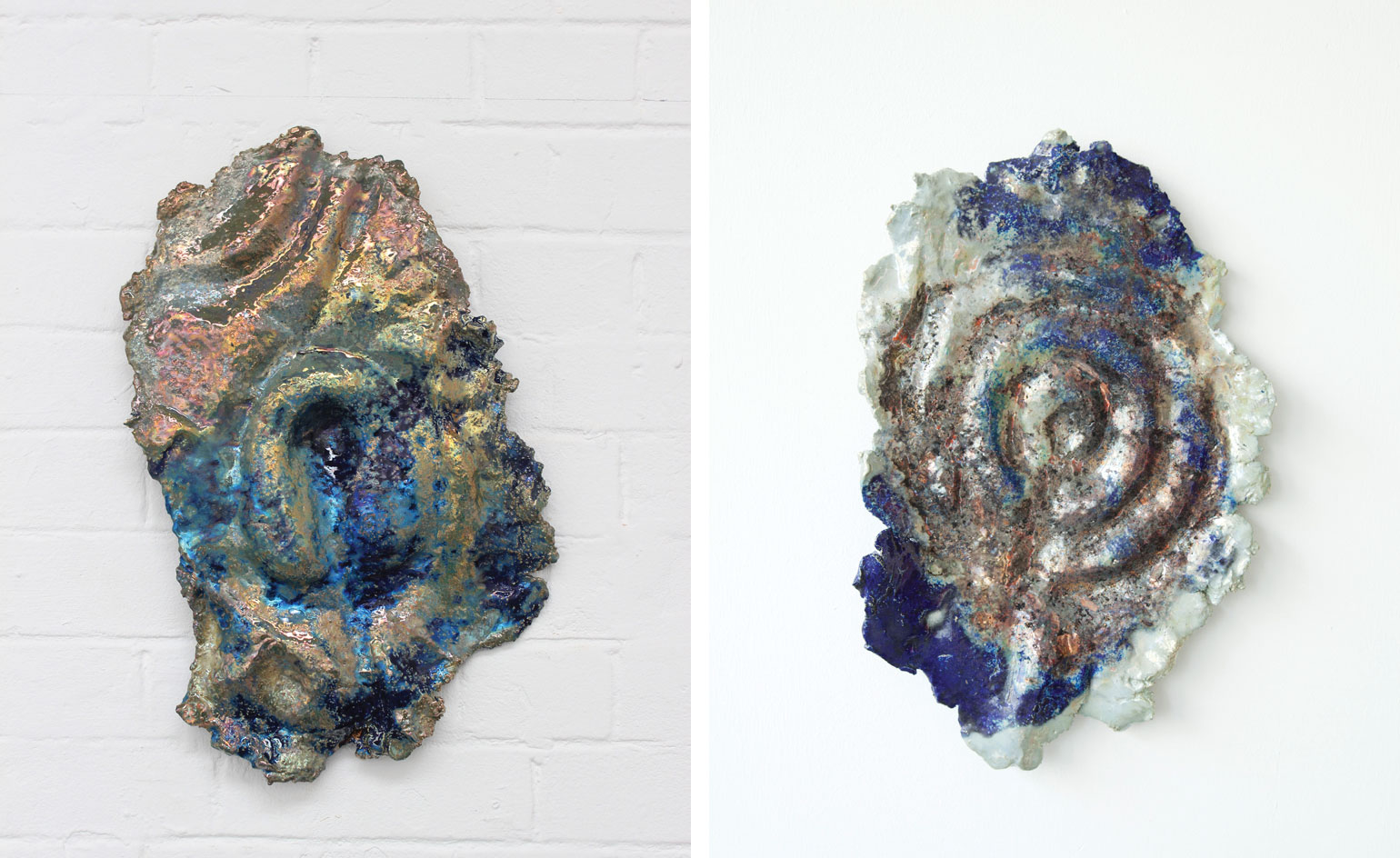
Humankind has been preoccupied with the transitoriness of life since the dawn of our creative consciousness – so much can be understood from our efforts to immortalise ourselves through art, from the pyramids to degenerating decay art, via 18th century vanitas paintings.
Markus Karstieß, a German sculptor, takes cues from the latter form of symbolism and ancient art history for an exhibition at Bruce Haines Mayfair.
On view are flowers placed in his capriciously textured, glazed ceramic The Doe Series vases. The blooms have slowly withered with time. 'In the dying and drying process most of the flowers get even more beautiful, some develop a mythical fragrance', Karstieß says. 'They get even more fragile, showing their value and nature. I feel this endangerment and fragility in my own body too.'
These are shown alongside casts of Neolithic ‘cup and ring’ marks found in Northumberland from 1500 to 4000 BC, in which concentric circles are impressed into stone surfaces as decorations connected to solstice rituals. Karstieß applies a rare lustre-glazing technique on these artefacts, a technique that, he says, 'allows precious metals like silver, bismuth and copper to appear on the surface by reducing the oxygen in the kiln with wood during the firing process'.
Karstieß is interested in these objects because they symbolise the future: he references the landscape art of Robert Smithson, another instance of the enigmatic power of man-made objects.
The work Studio Peel Off, however, seems like an isolated work among the others. 'It’s like a map that manifests my occupation of this poetic island', Karstieß says, movingly. 'By making the imprint of a floor, you have to press the whole weight of your body into every part of the work. The accumulation of energy is visible, the work is performative. I am the work.'
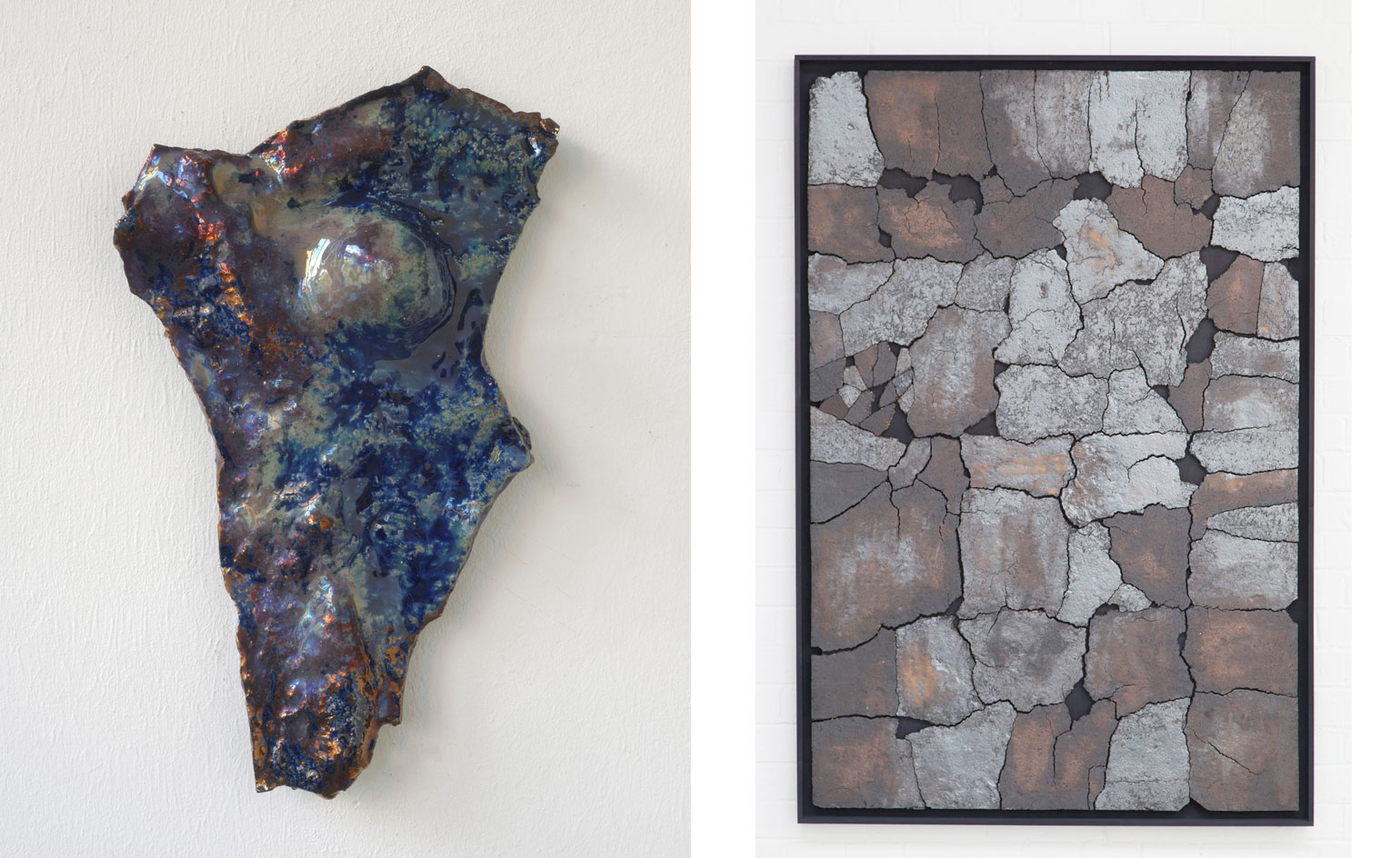
Karstieß created Studio Peel Off III by forcing his whole body weight downwards on the ceramic to create a unique, imprint of the floor. Pictured left: Stoner (Sky II), 2015. Right: Studio Peel Off III, 2013
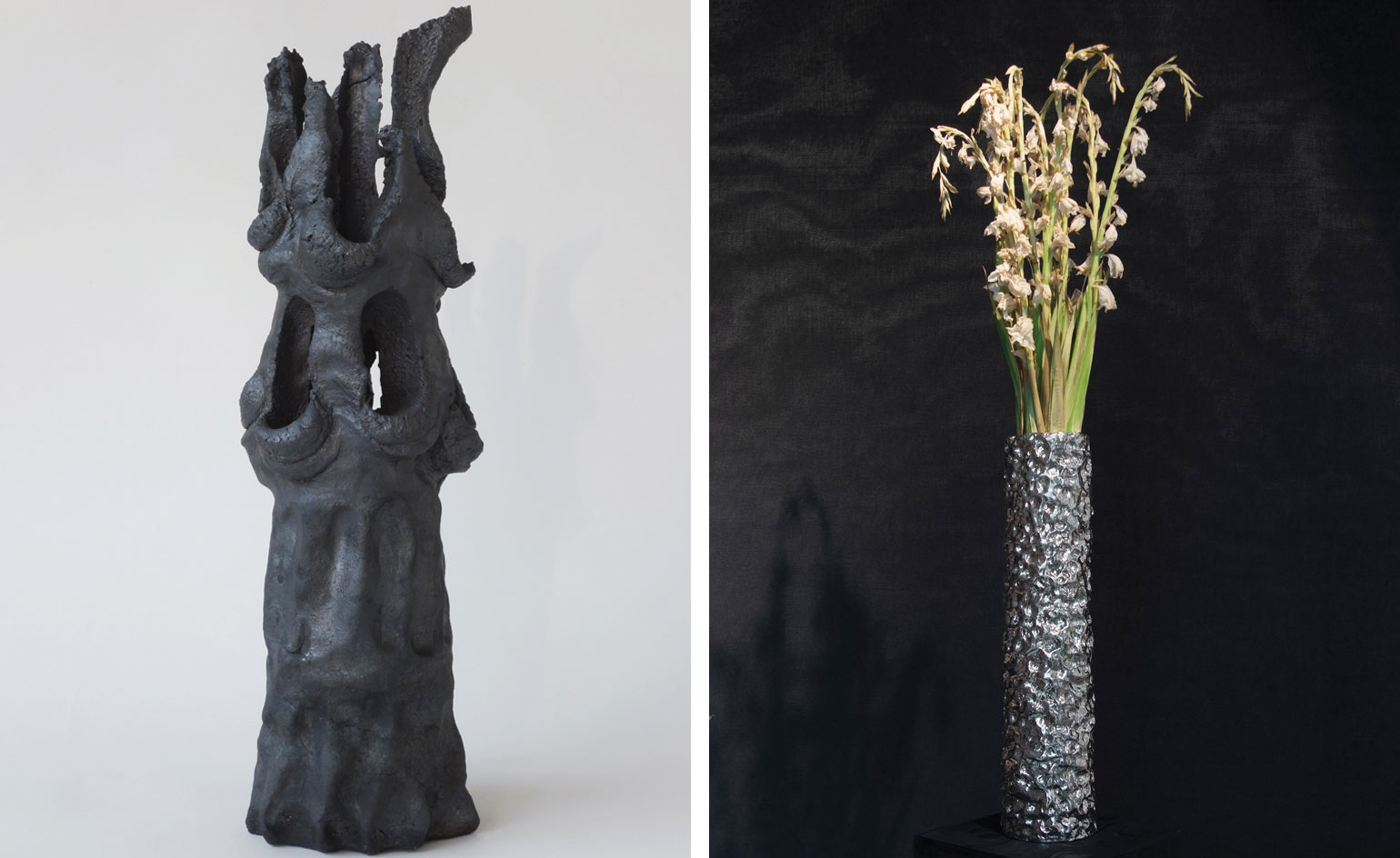
All of the flowers in the vases of the Doe Series are left to wither and shrivel, exaggerating the permanent quality of the vases against the transient nature of what’s inside them. Pictured left: Lavrence Doe, 2007. Right: Hannibal Doe, displaying an elegantly drooping white gladiolus, 2009
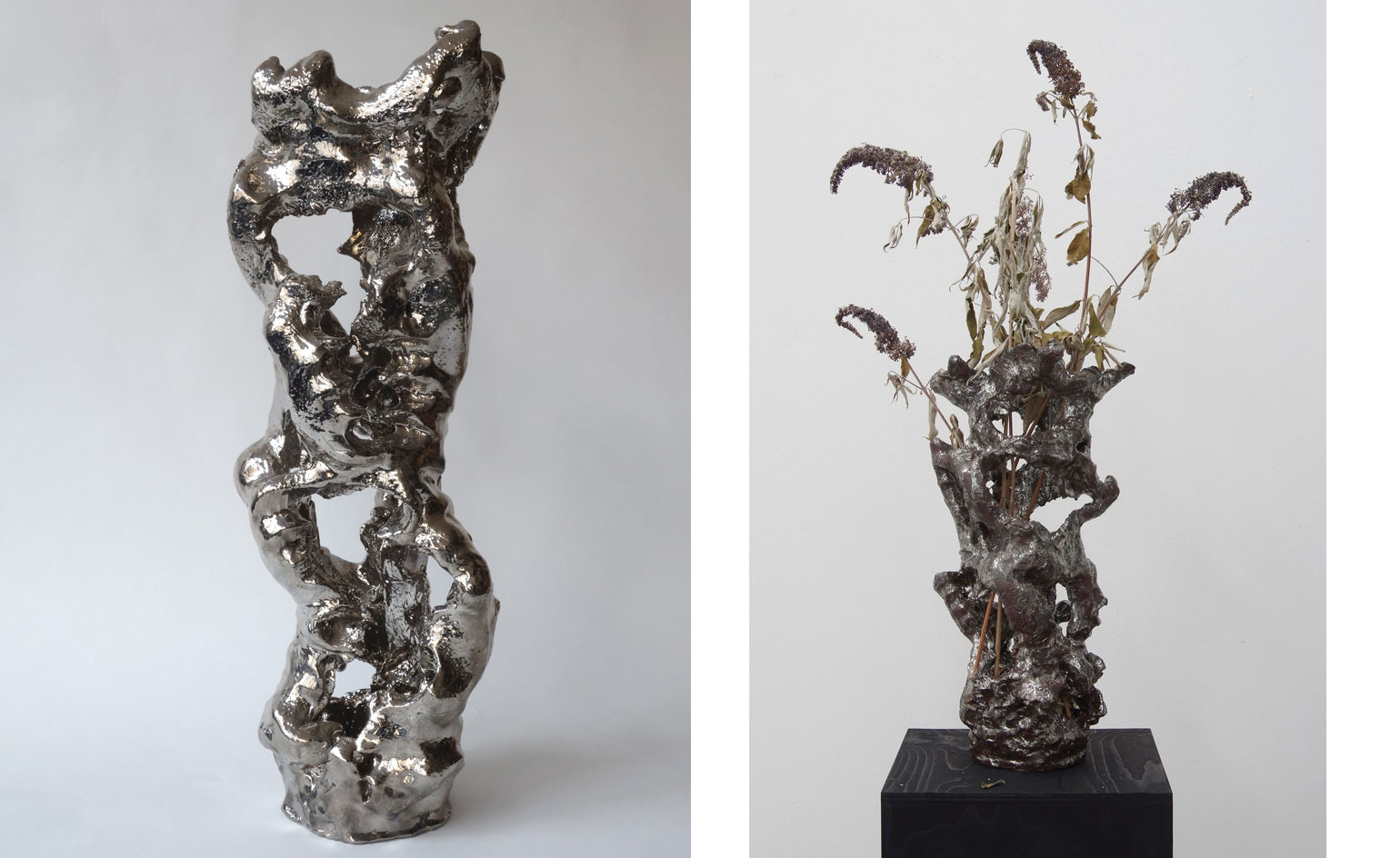
Pictured left: Morris Doe, 2010. Right: Orson Doe, displaying the purple-flowering butterfly-bush (Buddleja davidii), 2009
INFORMATION
'Markus Karstieß' is on view from 18 November – 18 December. For more information, visit Bruce Haines Mayfair's website
Photography courtesy Karstieß/ VG Bild-Kunst, Bonn 2007–2015
ADDRESS
Bruce Haines Mayfair
33 Saint George Street
London, W1S 2FL
Receive our daily digest of inspiration, escapism and design stories from around the world direct to your inbox.
Siska Lyssens has contributed to Wallpaper* since 2014, covering design in all its forms – from interiors to architecture and fashion. Now living in the U.S. after spending almost a decade in London, the Belgian journalist puts her creative branding cap on for various clients when not contributing to Wallpaper* or T Magazine.
-
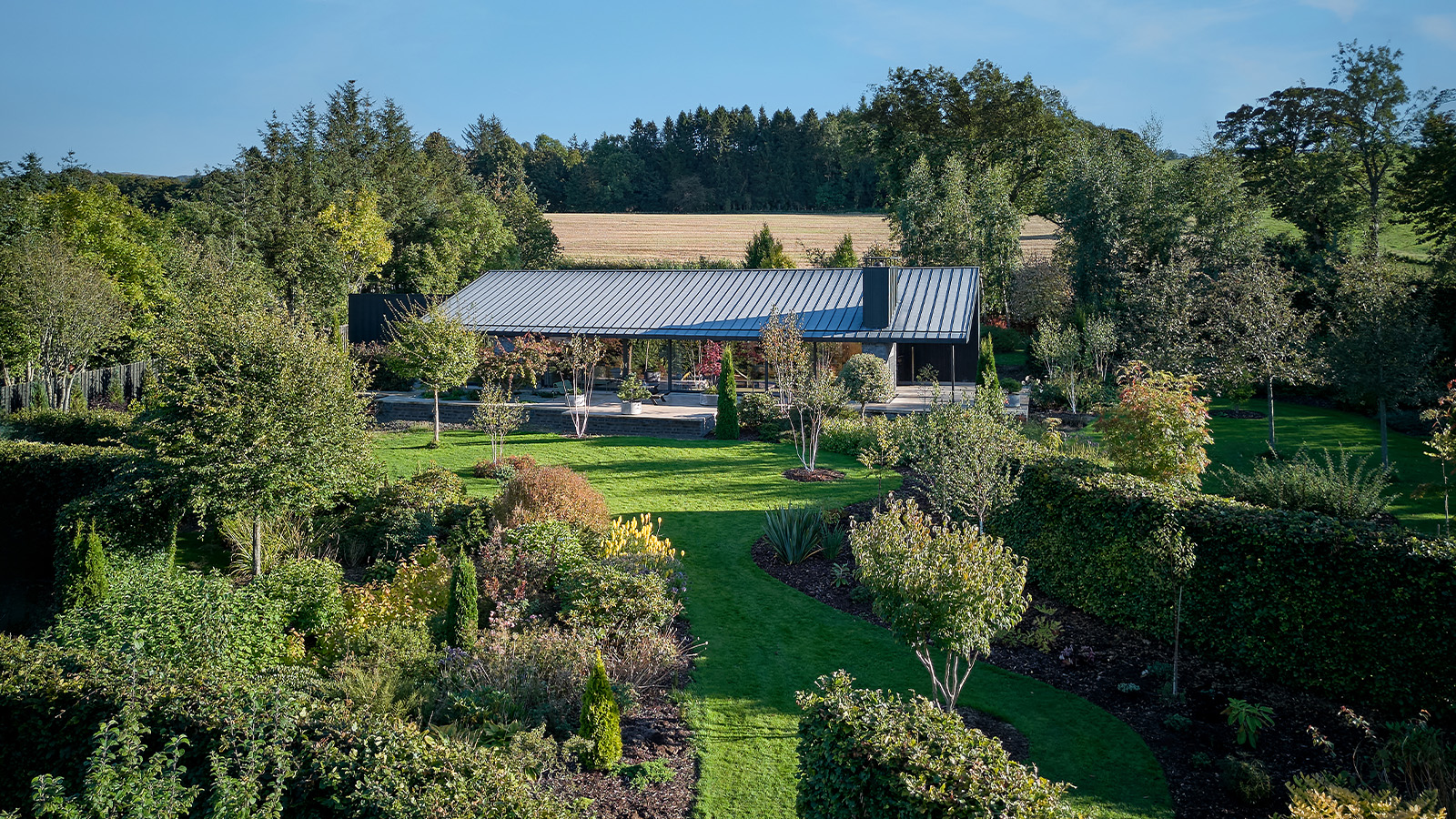 A compact Scottish home is a 'sunny place,' nestled into its thriving orchard setting
A compact Scottish home is a 'sunny place,' nestled into its thriving orchard settingGrianan (Gaelic for 'sunny place') is a single-storey Scottish home by Cameron Webster Architects set in rural Stirlingshire
-
 7 colours that will define 2026, from rich gold to glacier blue
7 colours that will define 2026, from rich gold to glacier blueThese moody hues, versatile neutrals and vivid shades will shape the new year, according to trend forecasters
-
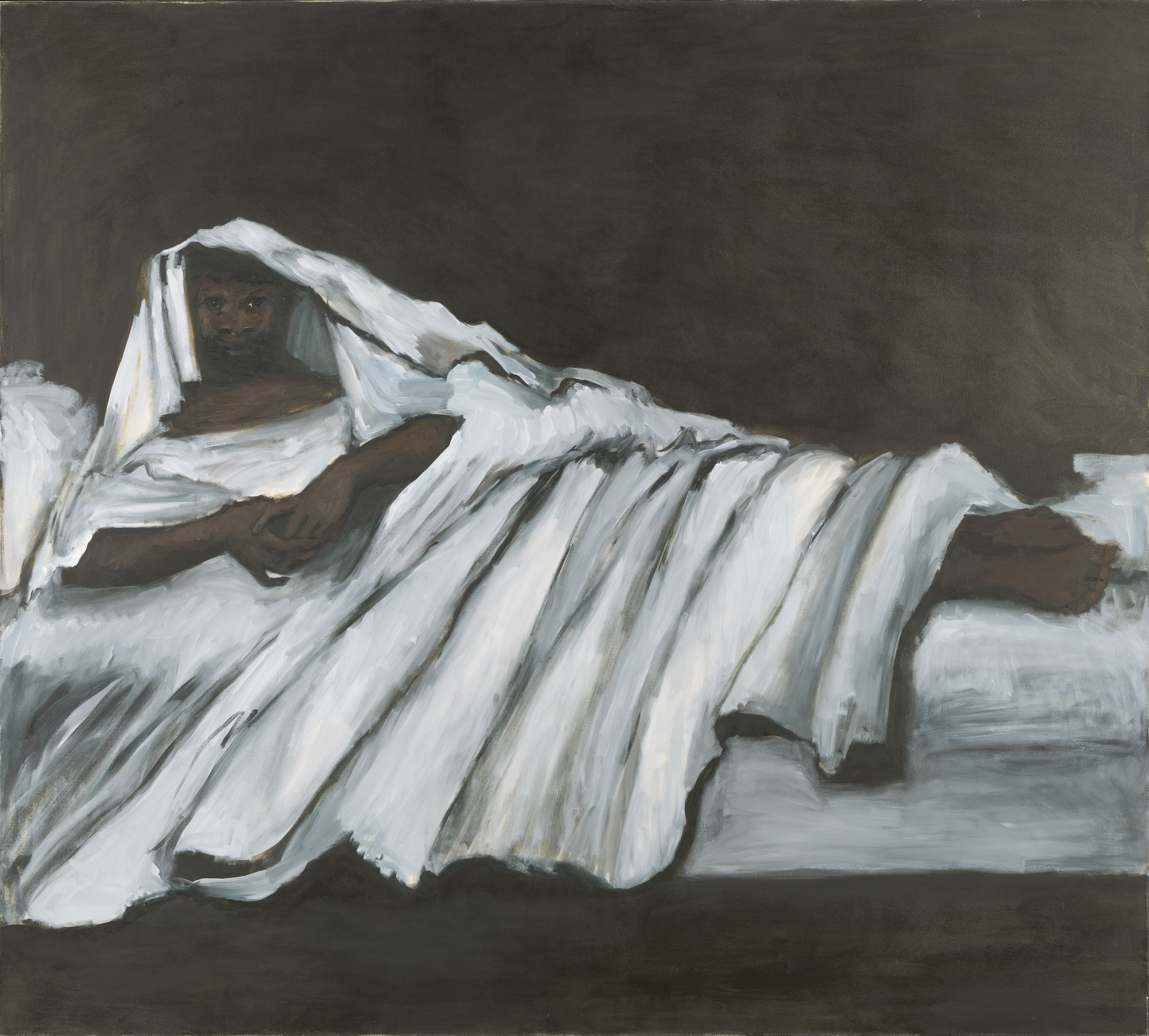 In Norway, discover 1000 years of Queer expression in Islamic Art
In Norway, discover 1000 years of Queer expression in Islamic Art'Deviant Ornaments' at the National Museum of Norway examines the far-reaching history of Queer art